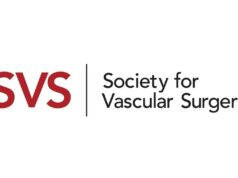
SVS Executive Director Kenneth M. Slaw, PhD, examines the key forces and factors shaping vascular surgery and how they may interact to create different environments.
The Society for Vascular Surgery (SVS) Strategic Board of Directors (SBOD), at its January 2024 meeting, reached a consensus to form and launch a special task force appointed by Immediate Past President Joseph Mills, MD, to assess the significant progress made by vascular surgery as an independent medical specialty over the past two decades and looking forward, analyze and identify strategic gaps, if any, that must be addressed for vascular surgery to reach its “optimal state.”
The process began before there were talks of the recent submission to the American Board of Medical Specialties (ABMS) of the planned American Board of Cardiovascular Medicine (ABCVM). The goal of this task force—called the SVS Task Force on Free-Standing or Federated Board Certification—is to help the vascular surgery community fully understand the implications to individual diplomats, trainees and our organizations regarding forming an independent board versus maintaining the status quo. “While many have a visceral reaction to what they think would be preferable, the SVS will make a well-informed decision after genuinely understanding all the ramifications,” said Michael Dalsing, MD, task force chair.
A membership call for action resulted in 30 volunteers for the task force. The SVS Executive Board (EB) approved the appointees and overarching objective of the task force: to examine the two primary existing models of board certification, free-standing or federated, and complete an objective, concise analysis of their strengths and weaknesses, which may provide an optimal path forward.
The composition of the task force intentionally provides a representative cross-section of the SVS membership from practice type to time in practice, as well as including those who support the formation of an independent board and those who lean against its formation. Michael Dalsing, MD, serves as chair of the task force and members include the following: James Black, MD; Karan Chawla, MD; R. Clement Darling III, MD; Alan Dietzek, MD; Dennis Gable, MD; Elizabeth Genovese, MD; Tom Huber, MD; Vikram Kashyap, MD; Elina Quiroga, MD; Matthew Sideman, MD; Natalie Sridharan, MD; and Gabriela Velazquez, MD. Matthew Eagleton, MD, SVS president; Keith Calligaro, MD, president-elect; Linda Harris, MD, vice-president; and Joseph Mills, MD, immediate past president, are ex-officio members.
The task force has conducted five Zoom calls and most recently held a meeting on July 25 at SVS Headquarters. The foundation for the task force’s work was identifying key guiding research questions solicited from the SVS EB, the SBOD and task force members, which helped with discovery and discussion during each call/meeting. Questions focused on the following areas: the role, function and relationships of key organizations involved in Vascular Board Certification; characteristics and differences in free-standing models within the ABMS and federated models within the American Board of Surgery (ABS)/ABMS: an opportunity analysis; detailed review of the ABS and the Vascular Surgery Board (VSB); financial variables and cost considerations; training/workforce impacts; and branding the specialty and board certification.
To answer these questions, interviews were conducted with the executive staff and leadership of the ABS, VSB, the Accreditation Council for Graduate Medical Education (ACGME), ABMS, the American Board of Thoracic Surgery (ABTS) and the American Board of Colon and Rectal Surgery (ABCRS). At the in-person meeting on July 25, a panel of representatives from the organizations interviewed was convened for a two-hour Q&A session. Follow-up questions based on the interviews were asked of the participants. The task force members also engaged in a “scenario planning” exercise to examine key forces and factors shaping vascular surgery and how they may interact to create different environments, as well as an analysis of how to best prepare for those conditions.
The task force will finish its analysis in September and prepare a final summary report for review by the SVS EB in November. Upon review, the SVS will share an executive summary with members for comment. SVS leadership will present the final report to the SBOD at the January 2025 meeting. The SVS EB will then process the feedback from the SBOD.












